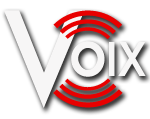Plain old telephone service, or POTS, is the standard, analog telephone service that remains the basic form of residental and small business telephone service nearly everywhere in the world, and was the only basic telephone service known to most people until the introduction of mobile phones. It has been available almost since the introduction of the telephone system in the late 19th century, mostly unchanged to the normal user since then despite the introduction of electronic telephone exchanges into the public switched telephone network since the middle of the 20th century.
The system was originally known as the Post Office Telephone Service or Post Office Telephone System in many countries. The term was dropped as telephone services were removed from the control of national post offices.
POTS services include:
- bi-directional, or duplex, voice path with limited frequency range of 300 to 3400 Hz: in other words, a signal to carry the sound of the human voice both ways at once;
- dial tone and ringing signals;
- subscriber dialing; and
- operator services, such as directory assistance and long distance and conference calling assistance.
With the advent of electronic telephone exchanges and computerisation during the 1970s and 1980s, a raft of new network services became available. These had been termed PANS for pretty advanced network (or new) services by some in the industry, although that term has never really caught on. The services offered include:
- voice mail
- caller ID
- call waiting
- reminder calls
- (three-way) conference calling
- Enhanced 911
- Centrex
and a number of other similar services.
The new services were made possible by the introduction of the support network for the ISDN as well as raised consumer expectations from services offered on mobile telephones.
One thing to note is that while modems capable of operating at up to 56 kilobits per second are available, most telephone companies do not guarantee service to that speed on POTS lines since these lines were not meant to be data lines. Unfortunately, this is not normally spelled out explicitly, leading to unnecessary repair calls.

